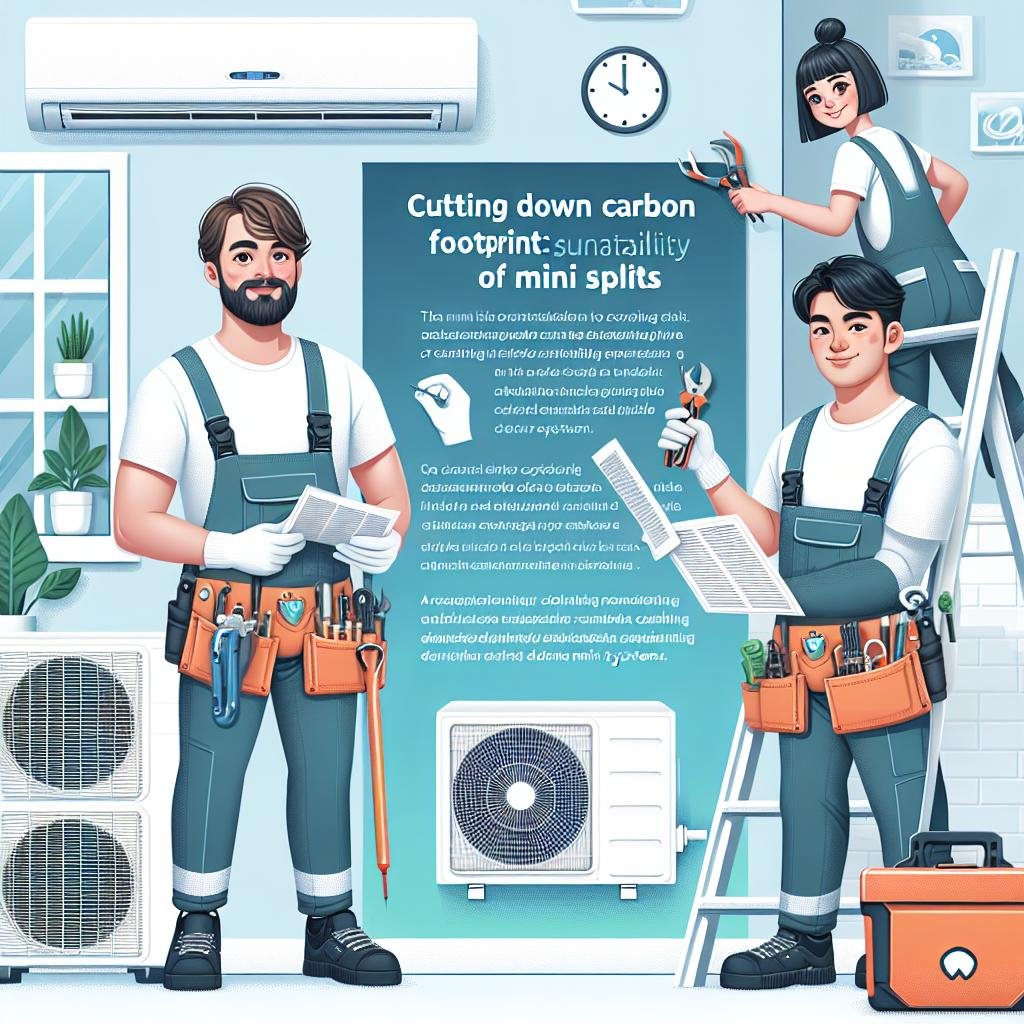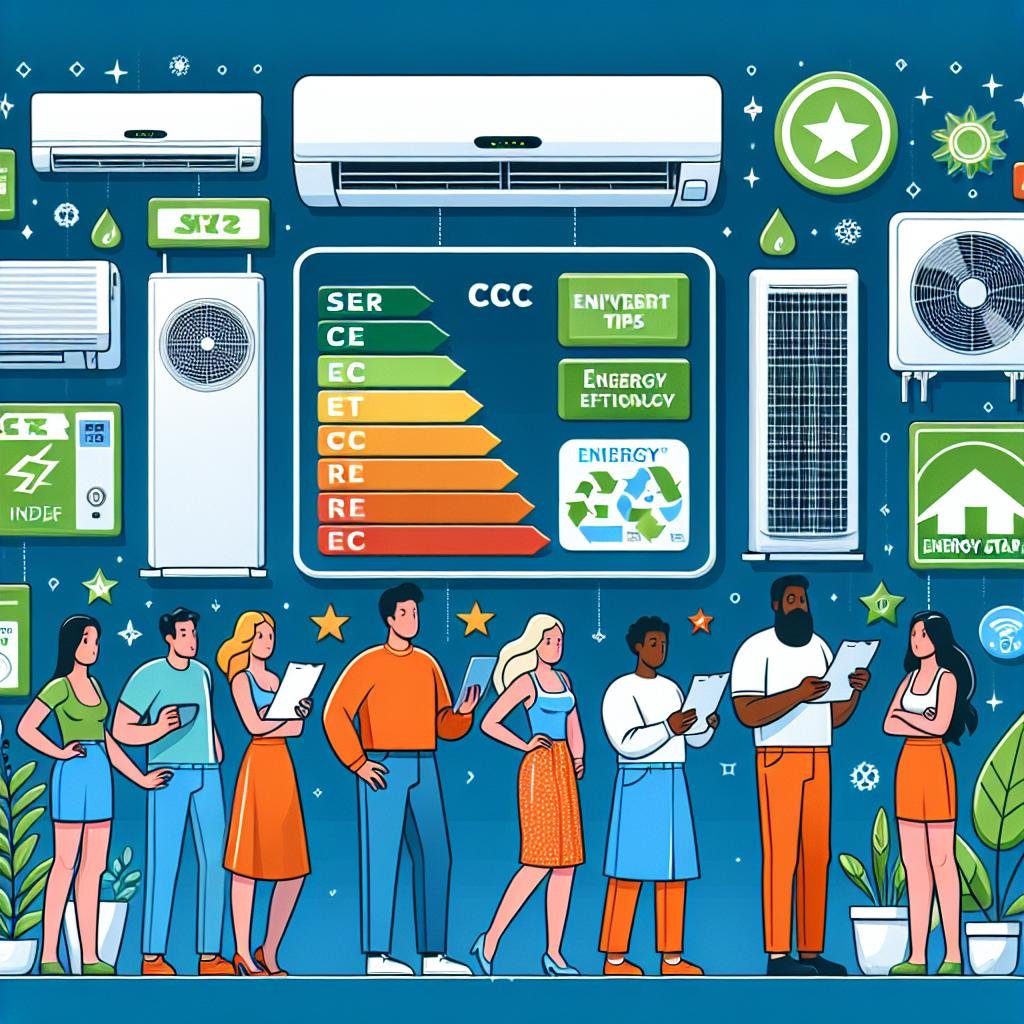Welcome to a world where staying cool doesn’t mean sacrificing our planet’s health. In this article, we invite you to explore the eco-friendly side of cooling with mini split AC systems. From reducing energy consumption to minimizing carbon footprints, these innovative cooling options are not only good for your comfort, but also for the environment. So sit back, relax, and discover how you can stay chill while keeping it green.
Understanding the Green Advantage: Why Mini Split AC Systems Shine
Mini split AC systems are celebrated for their energy efficiency, setting a benchmark in eco-friendly cooling solutions. By eliminating the need for extensive ductwork, which often accounts for significant energy loss (up to 30%), these systems ensure more direct and effective cooling. This remarkable characteristic not only reduces energy consumption but also slashes electricity bills, making it a win-win scenario for consumers. Additionally, many mini splits are equipped with inverter technology, allowing the compressor to adjust its speed based on the cooling demand, instead of simply turning on and off. This can significantly optimize energy use, further enhancing their environmental footprint.
Moreover, using mini split systems supports **flexible zoning**, where users can independently control the temperature of different rooms or zones. This means cooling is delivered only where and when it’s needed, effectively reducing unnecessary operation and energy waste. Here’s a quick comparison of **energy loss** between traditional ducted systems and mini split systems:
| System Type | Energy Loss |
|---|---|
| Traditional Ducted Systems | Up to 30% |
| Mini Split Systems | Less than 5% |
Adopting mini split ACs also aligns with the broad stroke of **reducing carbon footprint** by relying on more sustainable cooling technologies. Their usage is paving the way for greener spaces, contributing positively to the environment, one cooled room at a time.

Cutting Down Carbon Footprints: The Sustainability of Mini Splits
Traditional air conditioning units are notorious for their inefficiency and high energy usage, contributing significantly to carbon emissions. Mini splits, on the other hand, offer a much more eco-friendly alternative. These systems excel in localized cooling, meaning they can be installed to cool specific rooms rather than entire buildings, reducing energy consumption. **Energy Efficiency Ratings (EER)** and **Seasonal Energy Efficiency Ratios (SEER)** often place mini splits leagues above their conventional counterparts, making them a smart choice for the environmentally conscious. Additionally, mini splits utilize **inverter technology**, which varies the compressor speed to maintain the desired temperature, ensuring less wasted energy and lower electricity bills.
The smaller size and advanced efficiency of mini splits also translate to a smaller environmental footprint during manufacturing and transportation. Furthermore, these systems often employ **R-410A refrigerant**, which has lower ozone depletion potential compared to older refrigerants. Let’s look at a quick comparison:
| Feature | Mini Splits | Traditional AC |
|---|---|---|
| Energy Efficiency | High (EER: 20+) | Average (EER: 10-15) |
| Localized Cooling | Yes | No |
| Refrigerant Type | R-410A | R-22 or R-410A |
| Compressor Technology | Inverter | On-Off |
By implementing mini splits in your home or office, you are taking a proactive step towards reducing your carbon footprint and working towards a more sustainable future.

Whisper-Quiet Efficiency: Energy-Saving Features of Modern Mini Splits
Imagine a cooling solution that operates so quietly, it’s like a whisper in the background, ensuring your peace is never disrupted. Modern mini splits are designed with advanced **inverter technology** that adjusts the compressor speed to maintain the desired temperature, rather than turning it on and off like traditional systems. This reduces energy consumption dramatically, resulting in significant savings on your electricity bills. Additionally, many mini splits come with **eco-friendly refrigerants** that have less impact on the environment, aligning perfectly with a sustainable lifestyle.
Another impressive feature of contemporary mini splits is their **variable fan speeds** that allow for customizable comfort. These systems often include **smart controls**, which let you manage your home’s climate with a simple touch on your smartphone. But the innovation doesn’t stop there. Many of these units are equipped with **sleep modes** and **eco modes**, specifically programmed to reduce energy usage during the night or when you’re not home. For those who are tech-savvy, integrating these units with your home automation systems is a breeze, making it easier to optimize your home’s energy efficiency and comfort.

How to Choose the Best Eco-Friendly Mini Split for Your Home
When it comes to selecting an eco-friendly mini split for your home, it’s essential to consider a few critical factors to ensure you’re making the best choice for both your comfort and the environment. Start by opting for units with a high **Seasonal Energy Efficiency Ratio (SEER)**. A higher SEER rating means the unit operates more efficiently, translating to lower energy consumption and reduced carbon footprint. Look for systems that boast **Inverter Technology**, which adjusts the compressor speed to maintain a consistent room temperature, preventing energy waste typically associated with traditional HVAC systems.
Another key aspect to consider is the refrigerant used. Modern eco-friendly mini splits utilize **R-410A refrigerant**, which has zero ozone depletion potential and relatively low global warming potential compared to older refrigerants. Additionally, ensure the mini split has **Energy Star certification**, indicating that it meets stringent energy efficiency guidelines set by the U.S. Environmental Protection Agency. You may also want to explore features like **Wi-Fi connectivity** for smarter energy management and **advanced air filtration systems** that improve indoor air quality while minimizing environmental impact.
| Feature | Benefit |
|---|---|
| SEER Rating | Higher efficiency, lower power consumption |
| Inverter Technology | Consistent temperature, reduced energy waste |
| R-410A Refrigerant | Environmentally safer choice |
| Energy Star Certified | Meets rigorous efficiency standards |
| Wi-Fi Connectivity | Smart energy management |
| Advanced Air Filtration | Enhanced indoor air quality |
Q&A
Sure! Here’s a friendly and creative Q&A for the article about ”Eco-Friendly Cooling Options: Exploring the Environmental Benefits of Mini Split AC Systems.”
Q: Hey there! What exactly is a mini split AC system?
A: Great question! Imagine this: a magical box that brings cool, refreshing air into your home without the usual bulky ducts and high energy bills. That’s a mini split AC system! It consists of two main parts: an outdoor compressor/condenser and an indoor air-handling unit. They’re connected by a conduit that houses power cables, refrigerant tubing, and a drain line. Voila, chilly comfort!
Q: Interesting! But what makes mini split AC systems eco-friendly?
A: Oh, lots of things! First off, they are masters of energy efficiency. Traditional systems can lose up to 30% of their energy through ducts, but mini splits don’t have that problem! They deliver cool air directly to the rooms where you need it, cutting down on waste. Plus, many are equipped with inverter technology, which adjusts the compressor speed based on cooling demand. This means less energy is wasted cycling the compressor on and off. So, they’re gentle on the planet and your wallet!
Q: That sounds fantastic! What about the installation process? Is it a major hassle?
A: No hassle at all! Unlike central air conditioning systems, which can take days or even weeks to install, mini splits are relatively easy and quick to set up. There’s no need to tear down walls or mess with ductwork. A professional can typically have it up and running in just a few hours, so you can start relaxing in your eco-cooled haven faster than you can say ‘sustainability’!
Q: But, will one mini split unit be enough for my whole house?
A: Ah, the beauty of mini splits! They offer fantastic flexibility. For some homes, a single unit can cover a large area effectively. However, if you have a larger space or multiple rooms, you can set up a multi-zone system with multiple indoor units connected to one outdoor unit. Each zone can be controlled independently, so you can tailor the climate to each room’s specific needs, saving energy and keeping everyone comfortable.
Q: I’m sold! Are there any additional environmental benefits of choosing a mini split AC system?
A: Absolutely! Mini splits typically use eco-friendlier refrigerants, like R-410A, which don’t deplete the ozone layer. They’re also quieter than traditional systems, creating less noise pollution. And, since they last longer and require less maintenance, they contribute to a reduction in waste and materials over time. All these factors combined make mini splits a stellar choice for environmentally conscious cooling!
Q: Wow, so mini splits are energy-efficient, easy to install, and kind to the Earth. What more could you ask for?
A: Precisely! Whether you’re looking to reduce your carbon footprint, save on energy bills, or simply enjoy a more comfortable home, mini split AC systems have got you covered. They’re a win-win for both you and the planet. Ready to make the switch? Your eco-friendly, cool sanctuary awaits!
Feel free to add or adjust any details as needed!
Concluding Remarks
As the mercury rises and summer days stretch longer, cooling our spaces becomes a priority. But with eco-friendly options like mini split AC systems, maintaining comfort doesn’t have to come at the planet’s expense. By championing energy efficiency and reducing our carbon footprints, these innovative systems not only promise a cooler home but also a warmer, more sustainable future.
So, the next time you find yourself seeking relief from the sweltering heat, consider embracing a mini split AC system. It’s a small step that makes a big difference—a breath of fresh air for you and Mother Earth alike. Stay cool, stay green, and let’s build a cooler tomorrow together.

